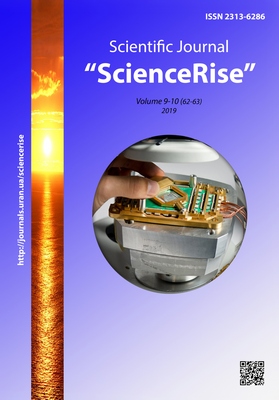Susceptibility of pipe steel of a controllable rolling tо stress-corrosion cracking
DOI:
https://doi.org/10.15587/2313-8416.2019.179545Keywords:
pipie steel, polarization, slow strain rate tests, cathode protection, stress-corrosion crackingAbstract
Susceptibility of Х70 pipe steel to stress-corrosion cracking (SCC) under complex influence of factors is investigated. Sensitivity to SCC is evaluated by coefficient (the ratio of relative reduction of the sample in air to its relative reduction in the solution). Susceptibility of X70 steel to SCC at the corrosion potential is low, but increases in the presence of stress concentrator and under applying of the cathodic polarisation. It is established some differences in the susceptibility to SCC at the – 1.0 VAg/AgCl of X70 pipe steel of different manufacturing. At the same combination of other factors, the greatest influence on sensitivity to SCC is predetermined by the presence of stress concentrator
References
Antonov, V. G., Arabei, A. B., Voronin, V. N., Dolgov, I. A., Kantor, M. M., Knoshinski, Z., Surkov, IU. P.; Arabei, A. B., Knoshinski, Z. (Eds.). (2006). Korrozionnoe rastreskivanie pod napriazheniem trub magistralnykh gazoprovodov: atlas. Moscow: Nauka, 105.
Frank Cheng, Y. (2013). Stress Corrosion Cracking of Pipelines. Hoboken: John Willey&Sons Publishing, 257.
Song, F. M. (2009). Predicting the mechanisms and crack growth rates of pipelines undergoing stress corrosion cracking at high pH. Corrosion Science, 51 (11), 2657–2674. doi: http://doi.org/10.1016/j.corsci.2009.06.051
Wang, J., Atrens, A. (2003). SCC initiation for X65 pipeline steel in the “high” pH carbonate/bicarbonate solution. Corrosion Science, 45 (10), 2199–2217. doi: http://doi.org/10.1016/s0010-938x(03)00044-1
Chu, R., Chen, W., Wang, S.-H., King, F., Jack, T. R., Fessler, R. R. (2004). Microstructure Dependence of Stress Corrosion Cracking Initiation in X-65 Pipeline Steel Exposed to a Near-Neutral pH Soil Environment. Corrosion, 60 (3), 275–283. doi: http://doi.org/10.5006/1.3287732
Zhang, C., Cheng, Y. F. (2009). Synergistic Effects of Hydrogen and Stress on Corrosion of X100 Pipeline Steel in a Near-Neutral pH Solution. Journal of Materials Engineering and Performance, 19 (9), 1284–1289. doi: http://doi.org/10.1007/s11665-009-9579-3
Arafin, M. A., Szpunar, J. A. (2009). A new understanding of intergranular stress corrosion cracking resistance of pipeline steel through grain boundary character and crystallographic texture studies. Corrosion Science, 51 (1), 119–128. doi: http://doi.org/10.1016/j.corsci.2008.10.006
Parkins, R. N., Blanchard, W. K., Delanty, B. S. (1994). Transgranular Stress Corrosion Cracking of High-Pressure Pipelines in Contact with Solutions of Near Neutral pH. Corrosion, 50 (5), 394–408. doi: http://doi.org/10.5006/1.3294348
Egbewande, A., Chen, W., Eadie, R., Kania, R., Van Boven, G., Worthingham, R., Been, J. (2014). Transgranular crack growth in the pipeline steels exposed to near-neutral pH soil aqueous solutions: Discontinuous crack growth mechanism. Corrosion Science, 83, 343–354. doi: http://doi.org/10.1016/j.corsci.2014.02.032
Chen, W., Vanboven, G., Rogge, R. (2007). The role of residual stress in neutral pH stress corrosion cracking of pipeline steels – Part II: Crack dormancy. Acta Materialia, 55 (1), 43–53. doi: http://doi.org/10.1016/j.actamat.2006.07.021
Tang, X., Cheng, Y. F. (2009). Micro-electrochemical characterization of the effect of applied stress on local anodic dissolution behavior of pipeline steel under near-neutral pH condition. Electrochimica Acta, 54 (5), 1499–1505. doi: http://doi.org/10.1016/j.electacta.2008.09.037
Harris, N., Askarov, G. (2006). Activation of corrosion processes on main gas pipelines of large diameter with impulse temperature change. Oil and gas business.
Asahi, H., Kushida, T., Kimura, M., Fukai, H., Okano, S. (1999). Role of Microstructures on Stress Corrosion Cracking of Pipeline Steels in Carbonate-Bicarbonate Solution. Corrosion, 55 (7), 644–652. doi: http://doi.org/10.5006/1.3284018
Szklarska-Smialowska, Z., Xia, Z., Rebak, R. B. (1994). Technical Note:Stress Corrosion Cracking of X-52 Carbon Steel in Dilute Aqueous Solutions. Corrosion, 50 (5), 334–338. doi: http://doi.org/10.5006/1.3294341
TU 14-3-995-81 Truby stalnye elektrosvarnye priamoshovnye ekspandinovannye diametrom 1420 mm iz stali marki X-70. Tekhnicheskie usloviia.
SNiP 2.05.06-85 Magistralnye truboprovody. Available at: http://profidom.com.ua/v-2/v-2-3/1653-snip-2-05-06-85-magistralnyje-truboprovody
GOST 5639-82 Steels and alloys. Methods for detection and detеrmination of grain size. Available at: http://docs.cntd.ru/document/1200005473
GOST 5640-68 Steel. Metallographic method for determination of microstructure of sheets and bands. Available at: http://docs.cntd.ru/document/1200004803
GOST 1778-70 Steel. Metallographic methods for the determination of nonmetallic inclusions. Available at: http://gostrf.com/normadata/1/4294835/4294835064.pdf
DSTU 4219-2003. Steel pipe mains general requirements for corrosion protection. Available at: https://dnaop.com/html/34129/doc-%D0%94%D0%A1%D0%A2%D0%A3_4219-2003
Downloads
Published
Issue
Section
License
Copyright (c) 2019 Lyudmila Nyrkova, Anatoliy Rybakov, Sergey Mel’nychuk, Svitlana Osadchuk

This work is licensed under a Creative Commons Attribution 4.0 International License.
Our journal abides by the Creative Commons CC BY copyright rights and permissions for open access journals.
Authors, who are published in this journal, agree to the following conditions:
1. The authors reserve the right to authorship of the work and pass the first publication right of this work to the journal under the terms of a Creative Commons CC BY, which allows others to freely distribute the published research with the obligatory reference to the authors of the original work and the first publication of the work in this journal.
2. The authors have the right to conclude separate supplement agreements that relate to non-exclusive work distribution in the form in which it has been published by the journal (for example, to upload the work to the online storage of the journal or publish it as part of a monograph), provided that the reference to the first publication of the work in this journal is included.

